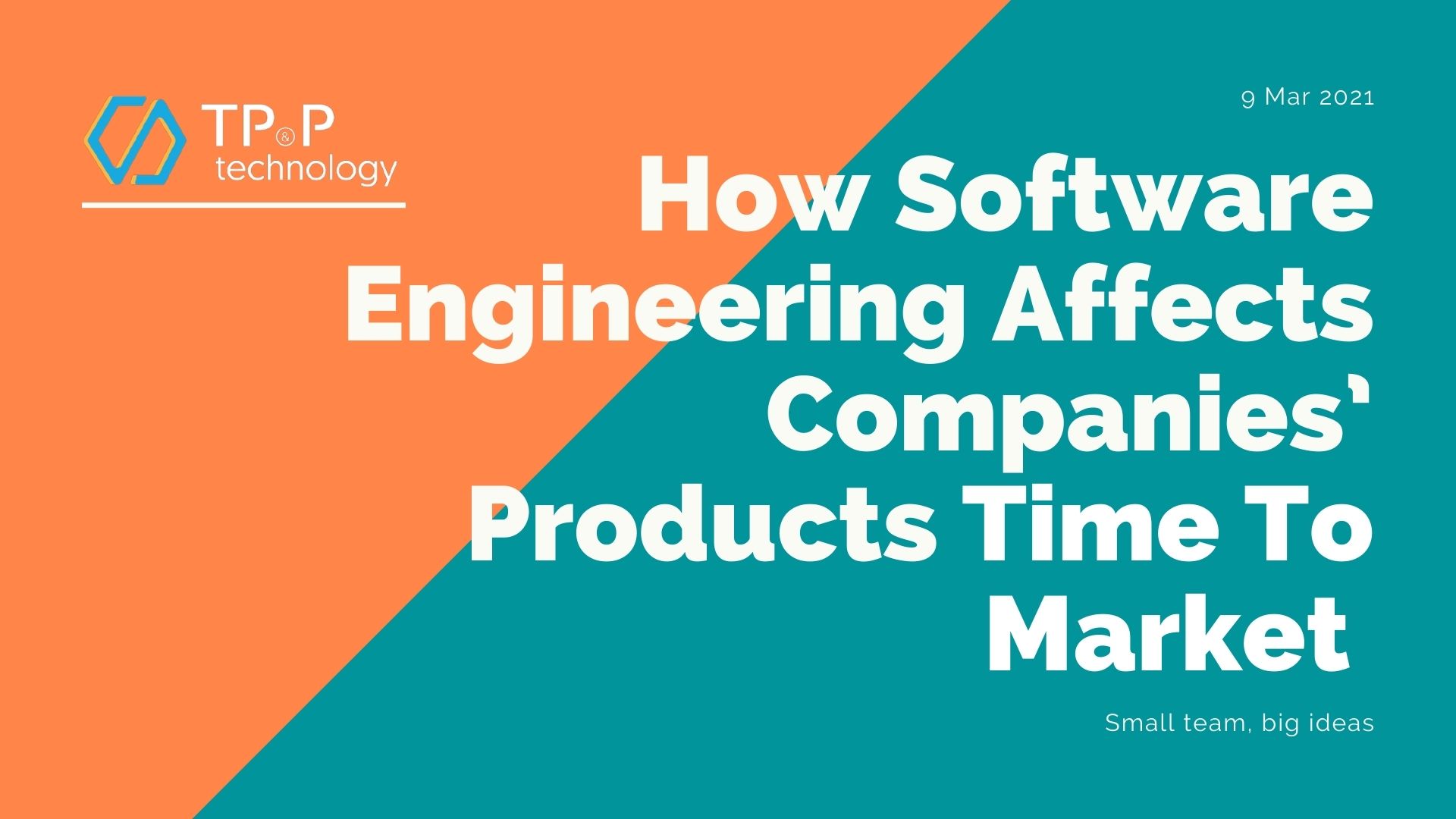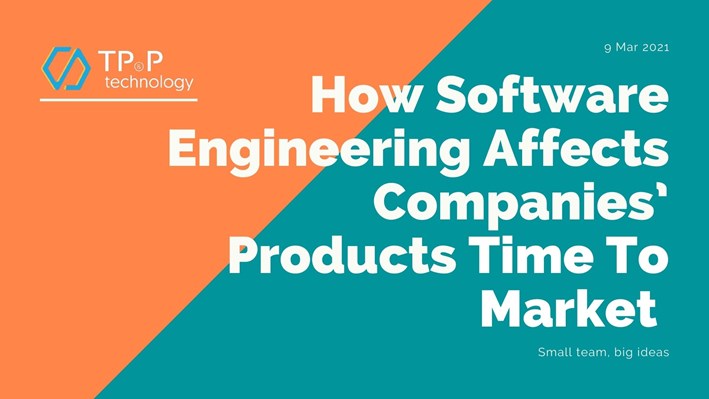
How Software Engineering Affects Companies’ Products Time To Market
Time to Market (TTM) describes the time to form an initial idea to fruition. This term can be used in marketing campaigns, or operational processes, or software development. In the software engineering industry, the duration includes the initiation of an idea for the product, its development life cycle, and the launch on the market. For technology companies, the important objective for software engineering is to accelerate the time to market.
We notice that many companies have come up with the tactic to speed up the process is acquire additional resources by hiring more sales staff. Unfortunately, increased speed to market isn’t exactly glued to additional resources. We have identified the three fundamental building blocks of software engineering that accelerate the time to market. Let’s delve in!
Understanding the importance of Time to Market
Like mentioned, Time to Market is basically the duration it takes to bring an idea into a finished product available for sale. The Time to market can be predicted if your company product development process is streamlined and effective. It can also enable you to make a product rollout plan.
Time to Market sometimes is referred to as Speed to Market (STM). This term is the primary determinant of innovation’s success due to four main reasons:
- Your competitors are investing in different levels of innovation.
- The fact that you’re slowing down monetizing your innovation and ideas gives them (your competitors) the chance to stay ahead in the marketplace.
- Most innovations are relied on or enabled by technology, which is changing rapidly every second. A delay in it can lead to overlapping ideas.
- The life cycle of an optimal price for a product or innovation narrows day by day. Once a product becomes mainstream, it does not bring a high incremental return on capital.
So, in short, the shorter your TTM is, the more competitive advantage you’ll gain.
The benefits of shortening the TTM
Nowadays, organization and product teams misuse more than 40 percent of their resources, which is usually due to redundant overhead like administrative paperwork, repetitive work, low product launch, poor quality information management. Not to mention, 80 percent of their data are unstructured and disorganized, and the tools do not provide adequate support. As a result: inefficiency and delays.
Speeding up the TTM can provide your company with benefits as below:
- Efficient management process: by developing a regular timeline, the core time can stay ahead of cost and production time; you can create lead-time-based schedules and headcount planning.
- Improve profit margin: the more you understand and in-touch with the market’s needs without compromising the product/service’s quality, the higher your margin revenue will be since you can get your product to the market faster.
- Drive higher market shares: by increasing the TTM speed, you can gain a competitive edge in the competition; rolling your product out fast also allows you to corner higher market shares.
- Stay ahead of the competition: by releasing your innovations sooner and faster, you will have the opportunity to be a pioneer in the technology market and maximize the latest technology. This will open up more opportunities for you and your products in the long run.
The key answer to succeed in getting products to market
By adopting new methodologies such as DevOps and Agile and successfully adopt such methods across organizations, businesses can incrementally deliver results every few weeks rather than three to six months. Yet, many companies spend a lot of time or are stuck in the planning and testing phase for their product development or improvement. The businesses that have rolled out large-scale implementations or are really implementing them are the ones who launched their products and services faster.
The role of Continuous Innovation
Continuous innovation can be considered as the key answer to speed up the time to market in product engineering, but this approach isn’t for everyone. Continuous innovation is different from Agile methods in terms of delivery. Continuous innovation is more than just incremental changes as it relates to the ongoing, gradual evolution that occurs in our activities, operations, and creations.
In continuous innovation, gathering user insights and development hypotheses remains part of the process. Continuous innovation offers a "trial" product approach and brings it to market using a "learn fast" approach. Technology companies that prefer detailed product requirements and specifications before starting a project may find themselves struggle such an approach. The same applies to business organizations with many internal stakeholders, complex governance structures, and strict regulatory environments.
Being familiar with setting business goals at the start of a project and having flexibility in your requirements is an important thing to keep in mind. Ultimately, of all the challenges that multinational software and hardware product distributors face when reshaping their business, the biggest challenge is to determine how each feature contributed to the business.
As a top Vietnam software outsourcing company, we do provide business transformation consulting services. We have helped businesses to define their business goals, and customize the platform that supports the business to meet those goals.
By learning how to prioritize and to work fast, you should be able to introduce your new platform to the market significantly earlier than the traditional development methodologies. After implementing the core platform, you can add data reporting and analytics capabilities in the months afterward.
Actions you should take now
To accelerate TTM, organizations need to have good preparation and be flexible to change in several areas. Companies often find themselves stronger in some of these areas rather than in others. For instance, many software companies have processes but lack a foundation. To avoid surprises that can hinder your efforts, here are some ways steps companies should take -
Adopt Modern Agile for Technology & Infrastructure
Changing can be complicated if your technology foundation is monolithic and remains too stiff. Agility is key, and while tech companies are widely known as digital leaders, many still have over-20-years of back-office legacy systems and enterprise applications that need to be evaluated and modernized.
Human Capital and Skills Gap
Agile bypasses traditional software development. Instead of handing new products off to separate groups for development, testing, and production, Agile organizes teams by-products and tends to keep them in small size. A single team may have full Java developers working with the infrastructure architects. The common denominator is that all team members can see the big picture and think of a product as a continuum, from development and testing to security and infrastructure.
The technical skill gap is a problem many businesses tend to overlook, yet it directly and strongly affects their ability to move quickly and efficiently. Even if your software product development initiative is in the planning or testing phase, it is never too early to formulate a plan to attract and retain talents, includes upskilling and hiring.
Determine what your new business process will look like
Software engineering requires a new way of doing things. You will need the right processes and tools to solve this problem. But first, you’ll need to understand that it will be different from what you’ve been used to do before.
Have you laid out a basic process for agile engineering? What do DevOps and Agile mean to you and your business? If you want to release a new version of a product triweekly, what is the process flow to support it? Not all organizations have all of these questions answered. It is critical to define frequencies and procedures in advance.
Conclusion
So, as you can see, Time to Market is rooted in software engineering. Shall you need any more software development/information technology advice, contact our team of experts now.
TP&P Technology is the top-ranked software development company in Vietnam. We provide custom software development, business solutions, and digital transformation services to businesses around the world. With more than 16 years of experience in the IT industry, we will be your trustworthy partner throughout your product development life cycle.


